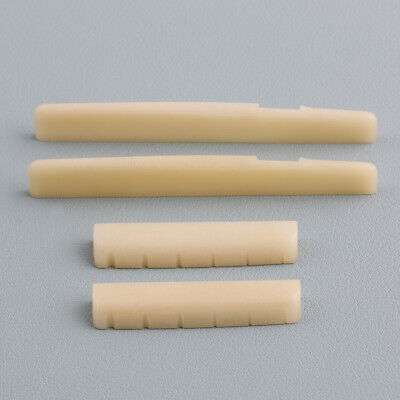Description
The classical guitar nut and bridge are essential components that contribute to the overall tone, playability, and sound projection of the instrument. Nut:Crafted from bone, plastic, or synthetic materials, the nut sits at the top of the guitar neck, near the headstock.The nut has slots precisely cut to accommodate the strings, ensuring proper string spacing and alignment.It plays a crucial role in transferring vibrations from the strings to the neck and ultimately to the guitar body, influencing the instrument's resonance and sustain.In classical guitars, the nut is slightly wider than in steel-string guitars, allowing for the wider string spacing characteristic of classical guitar necks.The material and quality of the nut can affect the guitar's tone, sustain, and overall playability.Bridge:Positioned on the soundboard of the guitar body, the bridge holds the strings in place and transfers their vibrations to the guitar's top.Classical guitar bridges are traditionally made of rosewood, ebony, or other dense woods, chosen for their tonal properties and durability.The bridge features saddle slots where the strings rest, maintaining proper string spacing and height.In classical guitars, the strings are typically tied to the bridge using traditional knotting techniques, known as "tie-block" bridges.Like the nut, the bridge plays a significant role in determining the guitar's tone, projection, and sustain, as well as its overall structural integrity.




